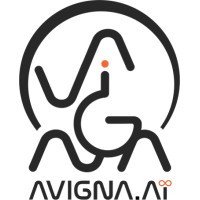Location Name: Pune Corporate Office - Mantri
Job Purpose
Bajaj Finserv Web is a critical component of the company’s omnipresence strategy. You will be working with India’s largest NBFC’s web technology stack, encompassing over 40 business lines and 230+ features, with nearly 500 million traffic and managing over 30,000 webpages.
It is an integrated platform offering a portfolio of products covering payments, cards, wallets, loans, deposits, mutual funds, and loans on lifestyle products, ranging from consumer durables to home furnishings.
The software Development Manager (SDM) will help build new features on a scalable, robust web platform, conduct code reviews and improve code quality by being hands-on and suggesting best practices and SOPs with AEM, Node JS and Solid JS tech stack
Duties And Responsibilities
Designing Technology Systems
- Analyze Business Requirements: Conduct thorough analysis of business needs and translate them into detailed technical specifications.
- Create System Blueprints: Develop comprehensive system blueprints and diagrams to visualize the architecture and structure of IT systems.
- Select Technologies: Choose appropriate technologies, platforms, and frameworks that support the desired functionalities, scalability, and future growth of the system ad get higher manager management buy-in.
- Documentation: documenting every single component covering its functional, technical and business aspect and ensuing that will be always updated.
Managing Implementation
- Collaborate with Development Teams: Work closely with SDM and development teams to ensure the design is executed successfully.
- Provide Guidance: Offer continuous guidance and direction to developers throughout the implementation process to ensure adherence to the design.
- Monitor Progress: Keep track of the implementation progress, addressing any issues or deviations from the design plan promptly to keep the project on track.
Coordinating with Stakeholders
- Effective Communication: Act as the primary liaison between technical teams and stakeholders, including business leaders and project managers, to gather requirements and ensure alignment with organizational goals.
- Present Technical Proposals: Clearly present technical proposals and solutions to stakeholders in an understandable manner.
- Facilitate Discussions: Lead discussions and negotiations to resolve conflicts or discrepancies between different stakeholders' expectations.
Ensuring System Reliability and Performance
- Conduct Testing and QA: Perform thorough testing and quality assurance procedures to identify and address any issues or vulnerabilities in the system.
- Implement Best Practices: Apply best practices for system optimization, scalability, and fault tolerance to ensure high performance and reliability.
- Monitor Performance: Continuously monitor system performance metrics and implement corrective actions as needed to maintain optimal performance.
Providing Technical Leadership
- Mentor and Coach: Mentor and coach team members to enhance their technical skills and capabilities.
- Set Standards: Establish technical standards and best practices for development and architecture within the organization.
- Subject Matter Expert: Serve as a subject matter expert on technology trends, emerging tools, and industry best practices, providing insights and guidance to the team.|Continuous Improvement and Innovation
- Stay Updated: Keep abreast of the latest technological advancements and evaluate their potential impact on the organization.
- Identify Opportunities: Identify opportunities for process optimization, automation, and efficiency gains within the technology landscape.
- Lead Innovation Initiatives: Lead initiatives to pilot new technologies or methodologies, assess their feasibility for adoption, and drive continuous improvement within the organization.
Key Decisions / Dimensions
Technology Selection
- Choose suitable technologies, platforms, and frameworks for projects.
- Evaluate new and emerging technologies for potential adoption.
System Design and Architecture
- Assessing the current system architecture and evaluating it regularly to make informed decisions about necessary changes, while ensuring all stakeholders are kept informed and confident.
- Define the architecture and structure of “middle layer” systems & process.
- Create detailed blueprints and diagrams to visualize system architecture.
Implementation Strategy
- Develop and oversee implementation plans, including timelines and resource allocation.
- Coordinate with SDM and development team(s) might cross department, to ensure smooth execution.
Performance and Reliability
- Implement optimization techniques and best practices for system performance and reliability.
- Continuously monitor and adjust system performance to meet standards.
Security Measures
- Establish security protocols and measures to protect data.
- Ensure systems comply with relevant regulations and industry standards.
- Ensure the secure connection and no data leakage.
Stakeholder Communication
- Communicate technical concepts and proposals to non-technical stakeholders.
- Ensure alignment with business goals and manage differing expectations.
Problem Resolution
- Identify and resolve technical issues during development and implementation.
- Make critical decisions quickly to address deviations from the design plan.
Continuous Improvement
- Lead initiatives to pilot new technologies and methodologies.
- Evaluate the feasibility and impact of new technologies on the
Major Challenges
Keeping Up with Technological Advancements
- Rapid Changes: Technology evolves quickly, and staying updated with the latest trends, tools, and best practices can be challenging.
- Continuous Learning: Constantly acquiring new skills and knowledge to remain relevant and effective in the role.
- Alert and Monitoring: system/process should in place to monitor the each indusial event as KPI and ensuing all KPI in place and working.
Balancing Innovation with Practicality
- Risk Management: Introducing new technologies and methodologies while ensuring they are practical and beneficial for the organization.
- Feasibility: Assessing the feasibility of innovative solutions and balancing them with existing systems and constraints.
Managing Stakeholder Expectations
- Communication: Effectively communicating complex technical concepts to non-technical stakeholders.
- Alignment: Ensuring that technical solutions align with business goals and managing differing expectations among stakeholders.
Ensuring System Reliability and Performance
- Scalability: Designing systems that can scale efficiently as the organization grows.
- Performance Optimization: Continuously monitoring and optimizing system performance to meet reliability and performance standards.
Handling Security Concerns
- Data Protection: Implementing robust security measures to protect sensitive data from breaches and cyber-attacks and comply with information security guideline and adhering them into daily execution behavior.
- Compliance: Ensuring systems comply with relevant regulations and standards and comply with enterprise compliance policies and adhering them into daily execution of team.
- Enterprise network and Cloud: must ensure reliable connectivity between on-premises systems and cloud services, address security concerns to protect data, and integrate legacy systems with modern cloud solutions. They manage performance across hybrid environments, ensure compliance with regulations, control unpredictable cloud costs, and bridge skill gaps within the team. Additionally, they must maintain comprehensive monitoring and observability to promptly detect and resolve issues, ensuring smooth operations and successful project outcomes.
Resource Constraints
- Budget Limitations: Working within budget constraints while trying to implement high-quality solutions. Close coordination with Budget (FM) team and tracking daily bases.
- Talent Shortage: Finding and retaining skilled team members to execute complex projects.
- Vendor Resource Management: managing the vendor resource quality, delivery, adaptation and availability aspect and monthly basis updating to the management and vendor.
Integration with Legacy Systems
- Compatibility: Ensuring new systems are compatible with existing legacy systems.
- Migration: Managing the migration of data and functionalities from old systems to new ones without disrupting operations.|Project Management
- Timelines: Meeting project deadlines while maintaining the quality of the deliverables.
- Coordination: Coordinating with multiple teams and managing dependencies to ensure smooth project execution.
Required Qualifications And Experience
- Qualifications
- Tech – Computer Science and Engineering
Work Experience
Should have 7-8 years of API development experience & least 3+ years of experience on technical architect involving Code java, Spring boot, Maven, Gradle, Queuing, DevOps, API, Micro-services and design pattern, BDD, unit cases, SonarQube.
Understand and troubleshoot technology problems and offer solutions
Understand the technology infrastructure and Application architecture end to end
Code review for the source code delivered by team
Understand the business requirements and deliver it through outsourced team
Support/lead new technology initiatives and related technology deliveries
Take part in evaluation of new products, POC, Time bound R&D and solution deliveries
Manage teams (both internal and external)/projects within given cost and time
Plan, execute, track and report progress of initiatives taken up
Adopt new processes/ improve existing processes to deliver better business solutions
Adhere to quality / info-security guidelines and processes including maintain adequate documentation
Attend review meetings, business user meetings, IT meetings etc.
Understand the system, application design
Mandatory to understand and take the requirement and get done with team with quality
Skills Keywords
Application Design pattern, Core Java, SQL, Web Services (REST/SOAP), Schedulers, Web Server (Tomcat/JBoss), Threading, collections, Advance Java – JSP, Servlet, Maven, XML, JSON, SQL, Docker, Good knowledge of the LINUX/WINDOWS, NodeJs will add the advantage, Cloud and Kubernetes knowledge add the advantage, Continuous Integration, Continuous Deployment, CI/CD, BBD, Unit test cases, Team management, vendor management, process management

















